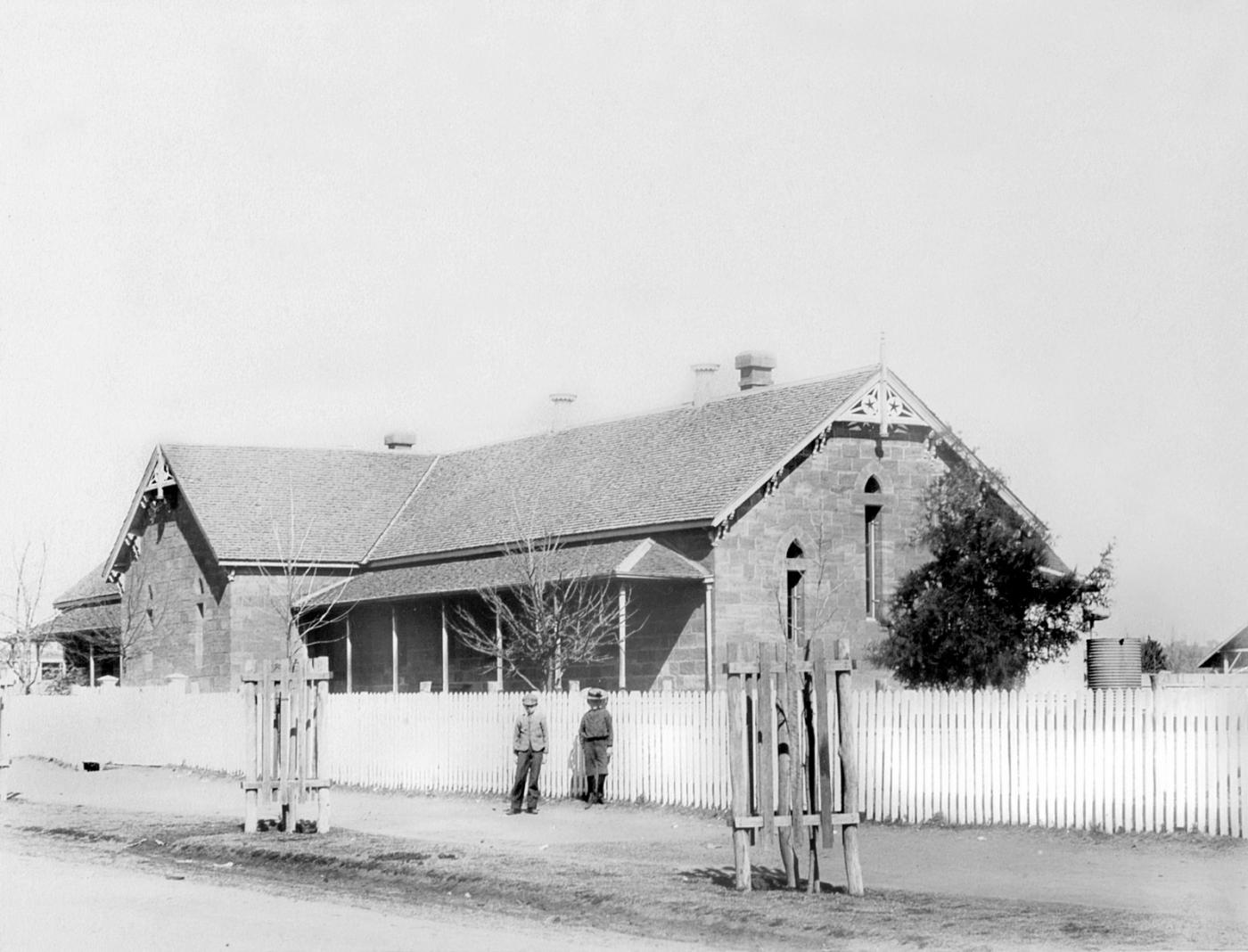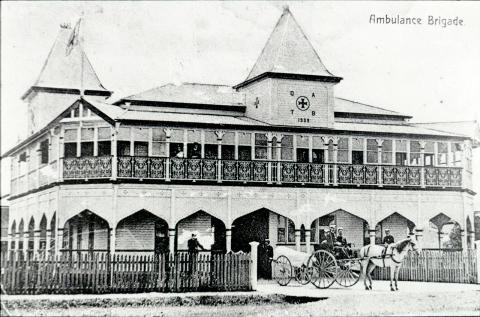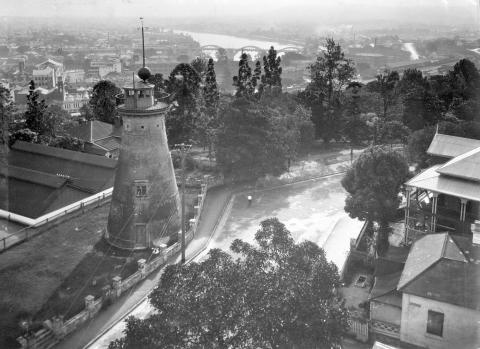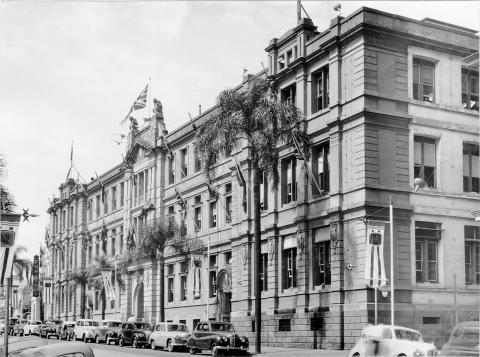
- News of the day
-
(From Our Own Correspondent)
We have had a tolerably busy week. First and foremost, the laying of the foundation stone of the new Primary School. We had a most lovely day for the ceremony, and everything went off satisfactory. At 2 o'clock a very large concourse of people assembled at the Town Hall, and a procession, consisting of the Volunteers, the Mayor and officers of the Corporation, the Oddfellows and Good Templars in their handsome regalia, and a long line of school children (male and female) and a host of citizens, headed by a brass-band, marched through the streets to the place where the school is being erected; about eight hundred people, large and small, we should think were in the procession. Arrived on the ground, the Mayor was first presented with a handsome silver trowel, with which he performed the ceremony of laying the stone; at this time there could not have been less than two thousand people collected.
The band played the "National Anthem". The Volunteers presented arms and the assembled crowd gave three cheers. His Worship made a short and appropriate address. Then the children sang, in parts, a very pretty glee called "All among the barley;"and sung it well and creditably. [...] On the whole it was a great success; not a hitch in the proceedings occurred, and each one of the large assemblage appeared happy, contented and interested. The day was kept a close holiday, and everyone appeared in his best array, neat and clean.
- Background
-
Architect Benjamin Backhouse employed Richard George Suter in 1865. In 1864 Backhouse had prepared a model plan for the Queensland Board of Education, to be used for country schools. Whilst employed in Backhouse's office Suter prepared designs for school buildings, which later lead to the Board commissioning Suter for the design of timber schools and teacher's residences. From the end of 1868 until 1875, Suter undertook almost all of the Board's work, which involved approximately 30 National Schools. He described the plans for the school as being draw up with 'the strictest view to economy and consistency with the accommodation required.' This accommodation provided for large classrooms with galleried seating where several classes would be taught at the same time under several teachers and pupil teachers.
The Mayor of Warwick, at a ceremony attended by 2000, people laid the foundation stone on 25 June 1874. The stonework was contracted to John McCulloch at a cost of £1055. John Keleher carried out the timber structures and joinery. The roof was originally shingled. It was completed by the end of March 1875 and was known as the Warwick Central School, the Warwick National School being renamed the Warwick East School. A dividing fence was constructed in the following year to separate the girls' and boys' sections.
Architect Richard Gailey, reporting to the Board of Education on 12 November 1875 criticised the design for its poor lighting and ventilation and commented on the ill fit of the windows. He recommended the construction of playground shelter sheds.
/152.030079,-28.2171844,7/450x450@2x.png?access_token=pk.eyJ1IjoicXNhLWRpc2NvLXFsZCIsImEiOiJjamJmdTgyZXEyeWNjMnlxZm8xcmtieHgxIn0.lmT9J5tTPKGuuccQgCVSAg)



